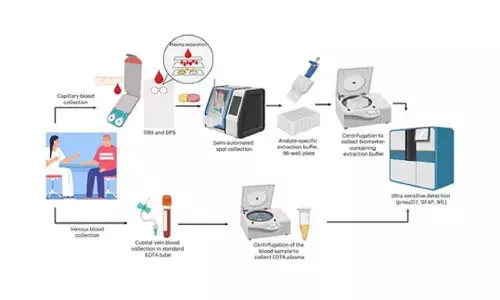Waiting for a credible news channel in North East India

As satellite news channels in various regional languages are booming in India and churn out sensational stories making a lot of hue and cry, the question of credibility of these media outlets also gets all the more pressing. India with a billion population has over 400 privately owned satellite news and current affairs channels, where most of the television media outlets are registered as \'free to air\' with the Information & Broadcasting Ministry.
As satellite news channels in various regional languages are booming in India and churn out sensational stories making a lot of hue and cry, the question of credibility of these media outlets also gets all the more pressing. India with a billion population has over 400 privately owned satellite news and current affairs channels, where most of the television media outlets are registered as 'free to air' with the Information & Broadcasting Ministry.
As they carry the tag of ‘free-to-air’ these news channels are not entitled to ask money from the viewers directly. This implies that the news and related programmes, produced and telecast by these channels, are meant for free to the audience. The consumers have to pay only to the distributors namely the cable transmission agencies and direct to home (DTH) operators.
The operating cost of these free-to-air news channels most of which are regional language ones are seemingly managed from the advertisement revenues. Indirectly it means, not the viewers but the advertisers always enjoy a say in the content of the news channels irrespective of its merit and authenticity.
But totally dependent on the advertisement revenues, where the monetary contribution from millions of viewers never reach the management of these channels, one is left wondering how these television channels can pursue ethical and impartial journalism.
The closure of a Guwahati-based satellite news channel last year unearthed another bitter truth about the distribution process of television channels across the country. Prime News, a 24x7 private news channel shut down its operation on 1 October last year with the indirect declaration of the management that they were unable to pay a huge amount of money to the local cable network distribution agencies.
Just before closing down the news channel, the Prime News management appraised its employees (who are over hundred of them) that it could not materialize the demand from the cable network to pay nearly rupees two crore as a distribution or carriage fees. As a response, the Prime News was blacked-out by the cable operators for nearly three weeks in September 2013.
As the news channel had no slot in any of DTH services the subscribers were not able to view any news and other programmes of Prime News for all these days resulting a very poor television rating points. And taking advantages of the situation, the management had decided to close down the channel, with of course some compensatory amounts to the employees as they resorted to strong protests.
Assam with a population of over 30 million hosts seven privately owned satellite news channels (News Live, DY365, News Time Assam, NETV, Frontier TV, Prag and North East Live) with few entertainment & local cable channels. These channels beam news and other programs in various languages like Assamese, English, Hindi, and Bengali to virtually cater to the need of nearly 60 million population of the alienated northeast India.
While the owners of Guwahati based private news channels allege that have to pay around rupees 20 million, which is one fifth of their annual expenditure, to the cable network agencies every year for facilitating the distribution of their signal to the viewers, the cable television operators' association in Guwahati claims that they have lawful right to receive the carriage fees from the channel owners.
They also claimed that the carriage fee for each free to air news channel is legitimate under the legal procedure of Telecom Regulatory Authority of India (TRAI) and Indian information & broadcasting ministry.
Similarly, the private DTH service providers also allegedly ask for similar amount of money from the free to air news channels for the entry into their space. Moreover, the DTH operators in India namely Dish TV, Tata Sky, Sun Direct, Airtel Digital TV, Reliance Digital TV, Videocon D2H, BIG TV etc always select a bunch of channels with the motive of profit only, irrespective of the commitment of the concerned channels to the country and the nation.
What is worth a mention is that the private DTH services have completed a decade in India, following the Union government in New Delhi issued the license to Dish TV to operate in the country in 2003. Initially concentrated on the rural market of India, where the cable operators are not visible still today, the DTH operator slowly encroached into city and metros.
By 2006, Tata Sky joined the competition with high-quality signal and a kind of choice for subscribers to select their package of channels. The rest of the DTH operators had stepped into the business in and after 2008 to give a huge boost to the Indian television distribution market.
Today, the DTH operators in India tap over 40 million active subscribers and the number is increasing every month. With quality transmission, the DTH operators have empowered the subscribers to select their packages (unlike depending on the mercy of cable operators in case of cable connection) and also the broadcasters to know the exact number of subscribers across the country, where as the cable operators show lower number of subscribers to siphon a huge amount of subscription money.
Both the offices of Union information & broadcasting ministry and the TRAI were contacted for their point of views in this respect, but no communiqué as the response was received.
India has registered more than 800 satellite television channels, more than half of those are news channels airing programmes in different regional languages. The Union ministry sources reveal that there are over 410 privately owned news & current affairs channels till 2013 mounting the news-broadcasting industry in India up to 20 billion rupees worth business.
Journalists' Forum Assam (JFA) and Electronic Media Forum Assam, two active media persons' organizations earlier raised voices for reforming the distribution system of local news channels. In a letter to Manish Tiwari, Union information & broadcasting minister, the organizations argued that the transaction between the channel owners and the cable network operators as well as the DTH authorities should be made accountable under the income tax department.
When a news channel has to spend for everything including the production and also distribution of its news (plus other programmes to the viewers), and the entire expenditure has to be compensated from advertisements, commitment of these free to air channels to the viewers can always be at stake.
Is it time to have few more paid news channels in various regional languages, such that they can survive with the contributions from the subscribers, a question now gains momentum? With a transparent and dedicated management, the paid news channel might function without the diktats of advertisers as well as the whims of the distributors, as the conscious and esteemed viewers would ultimately prevail over them for transforming them into credible and pro-people media organizations
* The author is President of Electronic Media Forum Assam
Next Story














